

 |
 |
||||
| Home | Reviews | Extras | Forums |
|
Ronja the Robber's DaughterSynopsisRonja was born on a night where the thunderstorm was so severe, a lightning strike tore the castle in half and left a huge ravine separating the two parts. The ravine was referred to as "Hell's Gap", and served as the buffer zone between the clan Ronja belonged to and the Mattis clan, the rival robber's group taking over the empty other half. As it turns out, the Borka also had a child, a boy named Birk. And while the tone between Ronja and Birk could only charitably be called "frosty" at first, the two became fast friends as they saved each other's lives on numerous occasions. But will this be enough to mend the metaphorical rift between the two robbers' clans? ReviewWhile I've never really read any of Astrid Lindgren's works myself, I have had the opportunity to experience her work through some of the many live action series made from them. I cannot understate how prolific a writer Astrid Lindgren was; maybe not internationally at first, but so much of her work was also released in Norway, both book, film and series alike. Some of this is what I grew up with -- which speaks volumes of how old the original is -- and which I would also watch despite my even then strong predilection towards animation. Among her works, Emil from Lönneberget is probably the one to pop into my mind the quickest, but Ronja Rövardotter is the one I have the most fondness over despite how long it has been since I last watched it. 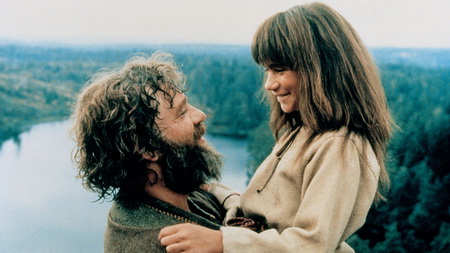 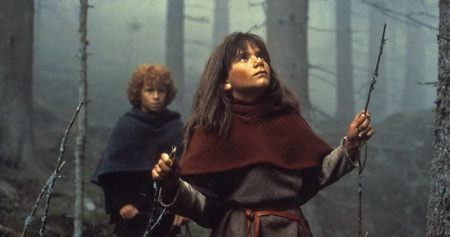 I decided to include two screenshots from the original movie to show you all how much more.... well, I don't want to use the word "scruffy", but the movie certainly knows how to better portray the level of hygiene you could expect from the era before showers and modern soap products. Compared to said movie, the Ronja the Robber's Daughter series definitely looks very, very Studio Ghibli -- or, to be a bit more specific; very, very Miyazaki -- all the way down to the character designs. It gives the kids a younger look than their movie counterparts, to be sure, but it's probably the visual style of the show that makes it feel a bit different than the movie. My biggest complaint about this series, however, is going to be how the characters are all rendered in CG that aims to ape more traditional cel animation. Even with Studio Ghibli at the helm, this kind of animation work still doesn't feel quite right to me, even when it comes with the incredibly expressive character direction you'd expect from Studio Ghibli. It's mostly the hair: CG graphics just makes it look so plastic-y and weird, and you see this in all of the characters in the show, especially Skalle-Per (referred to as "Noodle Pete" in this series for some reason.) with his tentacle-shaped strands poking out in all directions from his mostly bald head. (Hence his name.) Honestly, the character designs are fine. Would I have preferred a more Raggedy Ann type Ronja? Absolutely, but on the other hand, I do appreciate the general design when it comes to clothes, and also the equipment they often use. The background work is incredibly beautiful, spanning all the seasons of the Scandinavian wilderness and its many weathery moods. The CG works a little better for the animals, but is more of a mixed bag for the supernatural creatures. That being said, the star of the CG show is definitely the harpies. They weren't shown much in the original movie outside of that pivotal scene where Ronja gets her foot stuck in a rumphob's den during winter, and she gets attacked by one as she tries yanking her foot loose from their roof. They were creepy in the original movie to be sure, but despite sanding off some of their more bloodlusty moments, at least at first -- their screams in said movie were usually "blood shall floooooow, little girl" -- their designs and movements really do a fantastic job at portraying the sheer creepiness they exhude in their every appearance. Collectively, this is a gorgeous show, as one would expect, and the off-looking CG doesn't take too much away from that. I once said about Kemono Friends that I felt its dialogue was very child-centric, which was probably an indication of who the intended audience for the show was. This was never a topic of contention with Ronja the Robber's Daughter, though; Lindgren's work has always been considered mainly for children, which definitely comes through in her very anti-authoritarian streak that her works tend to have, particularly against adults and their many weird rules. (Much to the consternation of adults at the time.) Cruelty, selfishness and malice tended to be the property of adults, if presented, which is not to say it was typical, necessarily. With her work on Emil from Lönneberget, Emil would be a young boy who would do a lot of things that earned him punishments from his parents (mostly his father, hence the well known theme song opening of "EEEEEEEEEMIIIIIIIL?!") Then again, Astrid Lindgren had some pretty controversial opinions for her time, like how it is not OK to punish children by beating them. Yes, yes. It's shocking, I know. And for the record, neither Emil's or Ronja's parents ever punished their children by beating them; Emil was usually confined to the farm woodshop (snikkarboden) where he'd spend his time carving wooden sculptures and actually developing quite the talent for it. Ronja's father, however, is quite the doting type, and for their need to survive more than being a part of a household, he actually encourages her to explore and learn whatever she can both from their lives in the castle and the areas surrounding it. (Though he'd probably have a coronary if he knew Ronja's part-time childhood activities included jumping over Hell's Gap or exploring the dungeons below, which comes with the very real danger of getting lost and freezing or starving to death down there.) The only really questionable thing Mattis does is when the feud between his clan and the Borka's reach a boiling point where, after one of his men is shot with an arrow from one of the Borka -- despite Borka's attempt to stop it from happening -- Mattis's men capture Birk and... well, the next we see him, he lies, beaten and hogtied on the floor. It's not an easy thing to see, especially not in a children's show, but it's also telling that Lundgren wasn't necessarily above broaching difficult subjects to children. 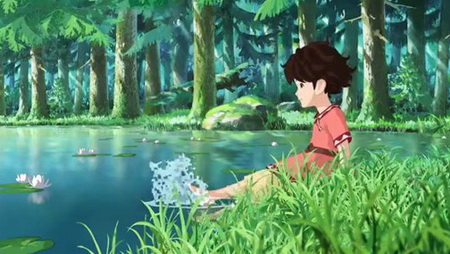 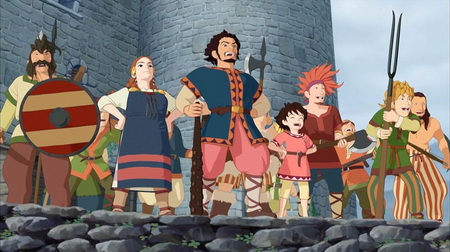 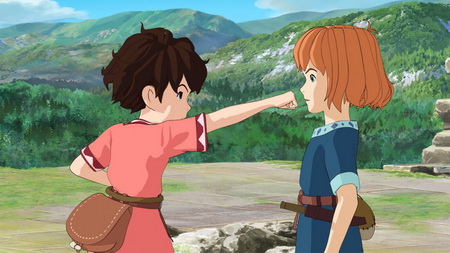 Lindgreen's irreverence for roles also shines through in her characters, particularly the female ones, which is probably at least part of the reason why Studio Ghibli has been interested in making works based on them. If you've ever watched Panda Go Panda, you might be interested in knowing (if you didn't already) that the main character in it was initially meant to be Pippi, but Ghibli was apparently not allowed to make Panda Go Panda into a "based on" work. If I were to guess, it'd probably because the main star of Panda Go Panda was made too much into a symbol of cuteness by looks, in which Astrid's Pippi is the very antithesis of. Whatever misgivings I might have about the clean look of the characters in Ronja the Robber's Daughter, however -- and it being the reason why I included two screenshots from the original movie -- the characters themselves still act very much like their movie selves for the most part. Ronja has her aforementioned typical inquisitive child streak of wanting to explore and learn everything about the world around her, and it's actually nice to see that Birk is the more levelheaded of the two, at least at first, but also mostly later when it comes to things like making a living for himself and his family. I can only wish I remember the original movie a bit better, but I am pretty sure that the manchild syndrome among the robbers weren't as severe in it. This is where the series is definitely more Ghibli than Lindgren, and although the adults in the show definitely have their moments -- Mattis being a doting father, for once, alongside every single one of his robber gang treasuring the single child in their midst -- it can get a bit tiresome in the long run. Lovis is, in fact, the one who gets changed the most. Sure, even in the original movie, she was presented more as a voice of reason alongside Skalle-Per, but the Ghiblification definitely has changed her both for better and worse. In the original movie, she wasn't really shy of taking part in the verbal mudslinging between the two robber clans, but her role in this series is seemingly to constantly disapprove of her clan of manchildren and wear an expression of nearly constant disapproval, shouting things like "I'm not cleaning that up" and any variation thereof. At least the men are keeping up Lindgren's general view of adults here, and even in this Ghiblified version of events, they're also the ones to make good on resolving their own mistakes, which is another plus in my book as far as I'm concerned. 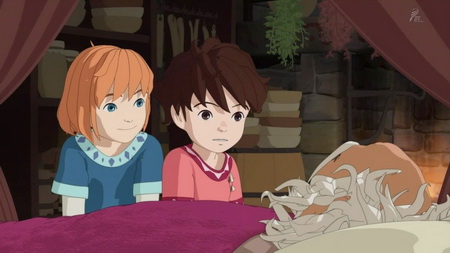 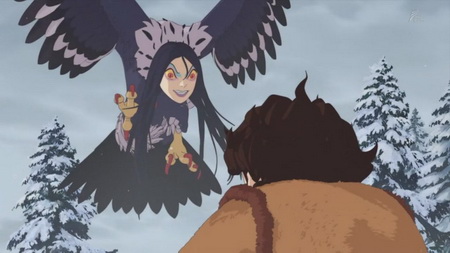 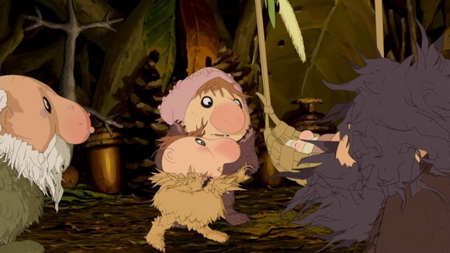 Quite a few years ago, I had the.... experience.... of watching Tales from Earthsea. Granted, in that case, said series was the only thing I had to build my experience on, but to say it was a lacking effort from Goro Miyazaki would be pretty spot on. That's why it makes me happy to say that Ronja the Robber's Daughter is a fine piece of work, slight changes to some of the characters aside, and proof that Goro himself is definitely on the right track. Whether you think he should be allowed to have a place in Studio Ghibli or not, I'd say that Ronja the Robber's Daughter is a series that belongs in its roster. By and large a more encompassing series of the original movie's story beats and well worth giving a look if you're a fan of Lindgren's work. — Stig Høgset Recommended Audience: Our main protagonists are the children of robbers, and although the show doesn't exactly glorify the profession itself, it's there. What made me a good deal more uncomfortable, though, is the scene where Mattis and his clan gets a hold of Birk, and it's clear that he got beaten up quite badly before being hogtied and presented as a means to blackmail the Borka clan to leave the castle, under threat of having him thrown in the dark dungeons below. Ronja's reaction to the scene was very much in line with what I felt myself having seen that. Version(s) Viewed: Region A Bluray, English dub. Review Status: Full (26/26) Ronja the Robber's Daughter © 2014 Studio Ghibli. |
 |
|
| © 1996-2015 THEM Anime Reviews. All rights reserved. |